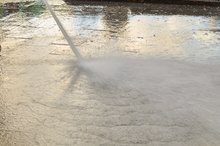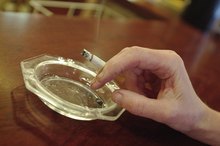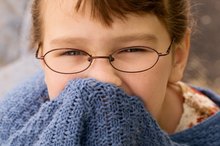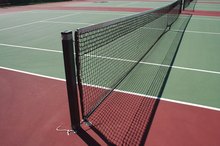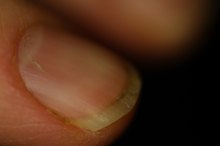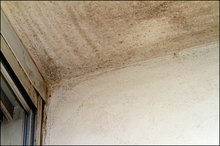Organic Remedies for Killing Mold
Mold growth can lead to stubborn stains on upholstery and hard surfaces in your home. Mold is an especially dangerous household irritant because it can cause allergy symptoms and headaches when people are exposed to it. You can call in a team of professional cleaners to remove the mold or you can troubleshoot the problem on your own. Chlorine bleach is an effective mold killer, but you can start with more gentle mold-killing solutions.
Vinegar
The Martha Stewart website suggests using plain white vinegar to kill mold organically. You can use the vinegar straight or dilute it with water if you prefer to start gently. Vinegar works best to remove mold from non-porous surfaces. If you have clothing that has mold on it, you can add vinegar to the water in your washing machine to remove mold stains from the fabric.
- The Martha Stewart website suggests using plain white vinegar to kill mold organically.
- If you have clothing that has mold on it, you can add vinegar to the water in your washing machine to remove mold stains from the fabric.
Boric Acid
Environmentally Friendly Ways to Clean Mold Off Concrete Patios
Learn More
Boric acid is a naturally occurring acid that works well to kill mold, according to the Martha Stewart website. You can use boric acid to remove stubborn mold and mildew. Apply boric acid powder along with water to hard surfaces that have mold growth and use a scrub brush to work the boric acid into the mold.
Tea Tree Oil
Tea tree oil has natural fungicidal properties, making the essential oil an effective anti-mold treatment. Mix 2 tsp. tea tree oil with 2 cups water in a spray bottle and spray the solution anywhere you want to kill mold.
Sun
How to Eliminate Odors From Smoking
Learn More
The sun's rays provide a wholly natural way to kill mold spores. The Louisiana State University website recommends setting rugs and upholstery that have mold on them outside in the sun to kill the mold 1. After leaving the fabric in the sun, you can scrub it with warm, soapy water, then leave the material outside to dry completely before brining it back into your home.
Denatured Alcohol
To remove mold from delicate leather garments, Louisiana State University suggests using denatured alcohol, which is a form of ethanol you can purchase at home supply and hardware stores 1. Mix 1 cup denatured alcohol with 1 cup plain water and spray the mixture on leather, then wipe away the dead mold.
Hydrogen Peroxide
If your tile or grout becomes infested with mold, the Martha Stewart website suggests using hydrogen peroxide to kill the mold organically. Combine 1/2 cup hydrogen peroxide with 1 cup water in a spray bottle. Spray the mixture on your grout and tile and let it dry. Wipe the peroxide away with a wet cloth.
- If your tile or grout becomes infested with mold, the Martha Stewart website suggests using hydrogen peroxide to kill the mold organically.
- Spray the mixture on your grout and tile and let it dry.
Related Articles
References
- Louisiana State University: Mold
- Amirhosein Ghaffarianhoseini, Husam AlWaer, Hossein Omrany, Ali Ghaffarianhoseini, Chaham Alalouch, Derek Clements-Croome & John Tookey (2018) Sick building syndrome: are we doing enough?. Architectural Science Review,61:3, 99-121.
- American College of Allergy, Asthma & Immunology. Mold Allergy. Reviewed April 23, 2018.
- Centers for Disease Control and Prevention. Fungal Diseases. Reviewed May 6, 2019.
- Centers for Disease Control and Prevention. Mold. Basic Facts. Reviewed December 20, 2017
- Asthma and Allergy Foundation of America. Mold Allergy. Reviewed October 2015.
- Centers for Disease Control and Prevention. Molds in the Environment. Rreviewed December 20, 2017.
- Asthma and Allergy Foundation of America, Mold Allergy
- Centers for Disease Control and Prevention (CDC), Mold, Basic Facts
- Rudert A, Portnoy J.Mold allergy: is it real and what do we do about it?Expert Rev Clin Immunol. 2017 Aug;13(8):823-835. doi: 10.1080/1744666X.2017.1324298. Epub 2017 May 17.
Writer Bio
Leigh Good has been writing for magazines and newspapers for more than 10 years. Her work has been published in numerous print and online publications. Good has a bachelor's degree in print journalism from Georgia State University.
